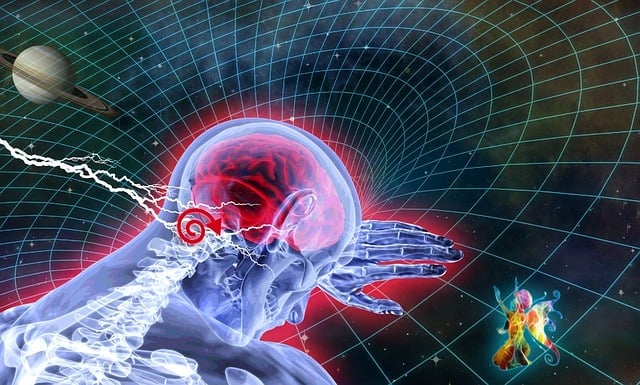FRANKFURT. Most of us find it difficult to grasp the quantum world: According to Heisenberg's uncertainty principle, it's like observing a dance without being able to see simultaneously exactly where someone is dancing and how fast they're moving – you always must choose to focus on one. And yet, this quantum dance is far from chaotic; the dancers follow a strict choreography. In molecules, this strange behavior has another consequence: Even if a molecule should be completely frozen at absolute zero, it never truly comes to rest. The atoms it is made of perform a constant, never-ending quiet dance driven by so-called zero-point energy.
First direct measurement of correlated zero-point motion
For a long time, these patterned zero-point movements were considered impossible to measure directly. However, scientists at Goethe University Frankfurt and partner institutions have now succeeded in doing precisely that at the world's largest X-ray laser, the European XFEL in Hamburg, Germany. They captured the "dance of the atoms" by shining a "spotlight" on individual molecules and taking snapshots of their atoms – revealing each atom's precise choreography.
Professor Till Jahnke from the Institute for Nuclear Physics at Goethe University Frankfurt and the Max Planck Institute for Nuclear Physics in Heidelberg explains: "The exciting thing about our work is that we were able to see that the atoms don't just vibrate individually, but that they vibrate in a coupled manner, following fixed patterns. We directly measured this behavior for the first time in individual medium-sized molecules that were also in their lowest energy state. This zero-point motion is a purely quantum mechanical phenomenon that cannot be explained classically." Instead of choreography, physicists speak of vibrational modes. While the motion patterns of molecules with two or three atoms are fairly easy to follow, it quickly becomes complex with medium-sized molecules – like the studied iodopyridine, which consists of eleven atoms. Iodopyridine features a whole repertoire of 27 different vibrational modes – from ballet to tango to folk dance.
"This experiment has a long history," says Jahnke. "We originally collected the data in 2019 during a measurement campaign led by Rebecca Boll at the European XFEL, which had an entirely different goal. It wasn't until two years later that we realized we were actually seeing signs of zero-point motion. The breakthrough came through collaboration with our colleagues from theoretical physics from the Center for Free-Electron Laser Science in Hamburg. Benoît Richard and Ludger Inhester, in particular, came up with new analysis methods that elevated our data interpretation to an entirely new level. Looking back, many puzzle pieces had to come together perfectly."
Explosion reveals molecular structure
But how can you capture an image of dancing particles? Using a technique called Coulomb Explosion Imaging, molecules are triggered to undergo a controlled explosion by ultrashort, high-intensity X-ray laser pulses, allowing high-resolution images of their structure to be generated. The X-ray pulse knocks many electrons out of the molecule, causing the atoms – now positively charged – to repel each other and fly apart in a fraction of a trillionth of a second. The fragments are recorded by a special apparatus that measures their time and position of impact, enabling the reconstruction of the molecule's original structure. This COLTRIMS reaction microscope has been developed over the past decades by Goethe University's Atomic Physics group. A version tailored specifically to the European XFEL was built by Dr. Gregor Kastirke during his PhD work. Seeing the device in action is something special, Kastirke says: "Witnessing such groundbreaking results makes me feel a little proud. After all, they only come about through years of preparation and close teamwork."
New insights into the quantum world
The results provide entirely new insights into quantum phenomena. For the first time, researchers can directly observe the complex patterns of zero-point motion in more complex molecules. These findings demonstrate the potential of the Frankfurt-developed COLTRIMS reaction microscope. "We're constantly improving our method and are already planning the next experiments," says Jahnke. "Our goal is to go beyond the dance of atoms and observe in addition the dance of electrons – a choreography that is significantly faster and also influenced by atomic motion. With our apparatus, we can gradually create real short films of molecular processes – something that was once unimaginable."






